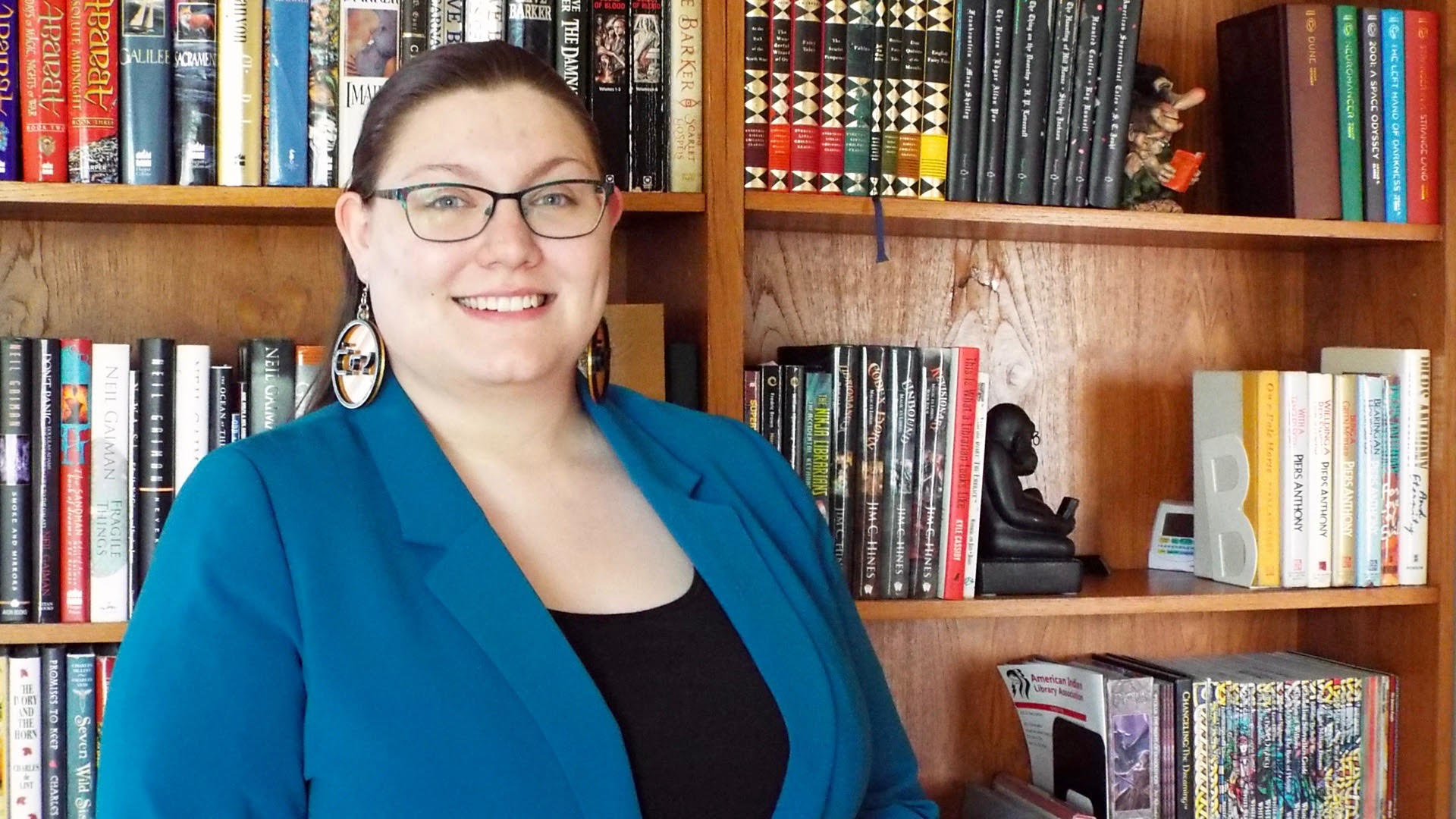As one of the University of Alberta Library’s Indigenous interns, Kaia MacLeod wanted to use her role to help make the library a more welcoming space for Indigenous people.
Knowing the U of A offers Cree language classes and is home to the Canadian Indigenous Language Learning and Literary Development Institute (CILLDI), she decided to 3D print a set of Cree syllabics for the library.
MacLeod knew her older sister and fellow librarian, Lorisia MacLeod, had created 3D printed Cree syllabic files while working at NorQuest and had put those files up on Thingiverse, a design community for discovering, making and sharing 3D printable things. Most designs on the site are freely available under a Creative Commons licence, meaning anyone can use or adapt them.
Taking her sister’s files, MacLeod headed to the Digital Scholarship Centre (DSC) to use their 3D printers.
“One of the things I liked most about getting to do this project is getting to work with the DSC. That was kind of a ‘Yay! I get to do this!’” said MacLeod.
The syllabics kit MacLeod made is a printed-out Cree Star Chart. The Star Chart is a symmetrical arrangement of 44 syllabics that was developed by the late Rosanna Houle in the early 1970s and is used by many language teachers today.
The kit is made up of 64 pieces, and can help language learners to see how the syllabics are spelled, said MacLeod.

“If you’re just learning how to write words out in syllabics, you can look at this and see: this is what this is supposed to look like, kind of like a stepping stone. And for people who are learning the pronunciation, once you know the pronunciation of certain syllabics, when it's laid out in the Star Chart, certain directions will have the same sound,” MacLeod explained.
Ultimately, MacLeod hopes the Cree classes and the CILLDI program can use the kit however they find best.
“And if they are like, ‘Ah, yes, this is super helpful,’ we can print more, so more people can use them,” MacLeod added.
Since writing about the kit in a blog post in June, MacLeod said she’s had a number of inquiries about the kit, including from people in the United States—proving there’s a wide interest in increasing Indigenous language resources.
“Personally, the importance of having Cree syllabics in the library is meaningful,” MacLeod noted. “As a Cree woman, it is great to see my language in a place of learning. Working as a book shelver in the (U of A Library), I saw the variety of language learning items for different Indigenous languages.
“It is with a great sense of pride that I can introduce something that connects with my culture.”
